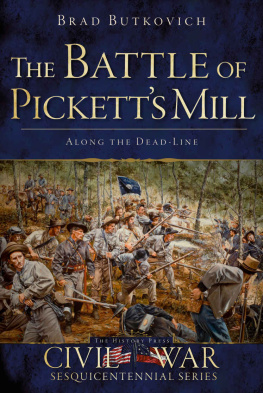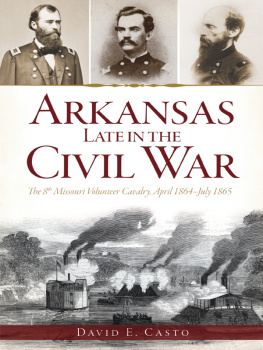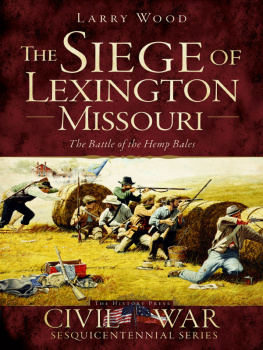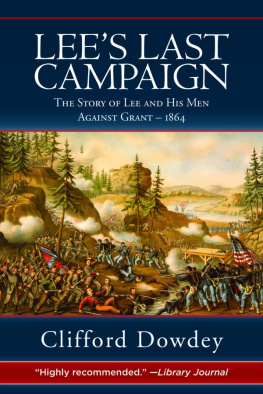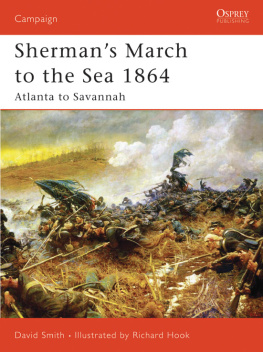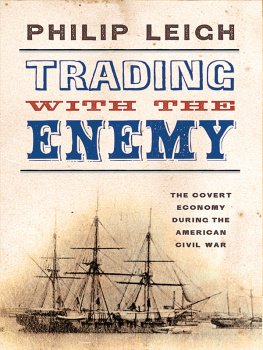Foreword
A THOUSAND ALLUREMENTS
Mobile in 1861
One cannot fault the enthusiasm shown by many residents of, and travelers to, nineteenth-century Mobile. Local writer Thomas Cooper DeLeons 1861 description of the port city was fairly typical:
Located at the head of her beautiful bay, with a wide sweep of blue water before her, the cleanly-built, unpaved streets gave Mobile a fresh, cool aspect. The houses were fine and their appointments in good, and sometimes luxurious taste. The society was a very pleasure-loving organization, enjoying the gifts of situations, of climate, and of fortune to their full.
Likewise, a popular antebellum southern periodical noted that, in Mobile, the fine climate, the suburban attractions, and the creation of a thousand allurements, that cluster around social life, have operated much in her favor. One resident summed up the prevailing attitude by claiming that there is no more delectable city on all the Gulf of Mexico than Mobile.
Although locals could rightfully boast of Mobile, praise came from outside sources as well. William Howard Russell, a British correspondent of the Times, visited Mobile in 1861. Exploring Mobiles social scene, he found (probably much to the chagrin of the religious establishment) a city that abounds in oyster saloons, drinking houses, lager beer and wine shops, and gambling and dancing places. Charmed by the cosmopolitan nature of the city, he approvingly pronounced Mobile the most foreign looking city I have yet seen in the state. William Tecumseh Shermancertainly not known for his love of southern citieshad been briefly stationed at Fort Morgan in the 1850s. In a letter to his sister, he gave his impression of the area:
On the river it resembles any other business city but as you leave the wharves and go back, you find beautiful streets of hotels, stores, and shops, etc., all as graciously ornamented as at New York. A little further back the streets are ornamented with trees and in front of the houses a little garden bed now and then shows a profusion of roses and shrubsa little further and they begin to assume a beauty neatness and comfort I never elsewhere beheld.
By 1861, the city of Mobile had already compiled more than a century and a half historical record that included relocation, a period of colonial rule, deadly disease, financial struggles and several natural as well as man-made disasters. Originally settled by the French at Twenty-Seven-Mile Bluff in present-day north Mobile County, the inhabitants moved the city to its current site on the northwest shore of Mobile Bay in 1711. The outpost was governed successively by the French (170263), British (176380) and Spanish (17801813) before falling under United States jurisdiction. Mobile entered the Union as part of the new state of Alabama in 1819. After the United States finally got possession of the area, the size and makeup of the citys population went through a marked change. An 1840 population of 13,621 had grown to nearly 30,000 by 1860. As the cotton kingdom expanded into what was then known as the Old Southwest, Mobile emerged as an important financial and transportation center of the cotton trade.
Indeed, Mobile did have many allurements that appealed to the religious, charitable, educational, literary, social and entrepreneurial needs of its inhabitants. Guest or transient residents of the port could choose from several hotelsmost notably the just completed Battle House. Three banks, including the Bank of Mobile, served the needs of commerce and credit. Government business could be transacted at the U.S. Customs House, while international concerns could be handled at one of thirteen foreign consulates. Nine insurance companies as well as six post office branches served the businessman and private citizen alike. Those in physical need could seek out one of three public hospitals or one of the several private institutions. Certainly the population did not suffer from a lack of social and cultural diversions. Religious denominationsMethodist, Baptist, Catholic, Episcopal, Presbyterian and Africanflourished. Their meetinghouses ranged from stately cathedrals to Federal-style structures that would be creditable to any of our larger cities and a floating chapel anchored in Mobile Bay for the many transient seamen. Those so inclined could participate in any number of civic/social organizations, including the Masons, Odd Fellows, Franklin Society, Sons of Temperance, Temple of Honor, mystic societies, fire companies and military units. The reading public was served by four partisan daily newspapersthe Register, the Advertiser, the Tribune and the Mercury. Mobiles youth had the opportunity to attend the first public school system in the state of Alabama. A medical college trained future practitioners in surgery, anatomy, physiology, pathology, obstetrics and chemistry.
These amenities notwithstanding, Mobiles primary importance came from its status as a leading cotton port and as an emerging rail center. Alabama was the second-largest cotton-producing state in the nation, and most of its bales were sold in and transported through Mobile. The ports $3,670,183 in exports was second among southern ports only to New Orleans. The Tombigbee and Alabama River systems gave Mobile a connection to the interior of the state, while Mobile Bay gave access to the Gulf of Mexico and the world markets. Additionally, Mobile was served by two railroads. The Mobile & Ohio connected the city with Columbus, Kentucky. At Corinth, it crossed the eastwest Memphis & Charleston, and at Meridian, it connected with the Alabama & Mississippi River line. The Mobile & Great Northern Railroad was opened in November 1861. It ran from Tensas landing to Pollard, Alabama, where it linked with the Alabama & Floridagiving Mobile access to Montgomery and Pensacola. During the war, the largest single Confederate troop movement by rail (twenty-five thousand men) would come through Mobile.
Considering all these facts, it is easy to understand why Mobiles residents were somewhat optimistic about their future. One writer spoke for many when he stated that [w]e now venture the prediction that the city of Mobile in three years more of the toil, industry, public spirit and enterprise of its citizens, enter upon a new career of prosperity and development. However, the events in the next four yearsduring which the United States would go through its most severe trialwould send the people of the port city along a very unpredictable course.


